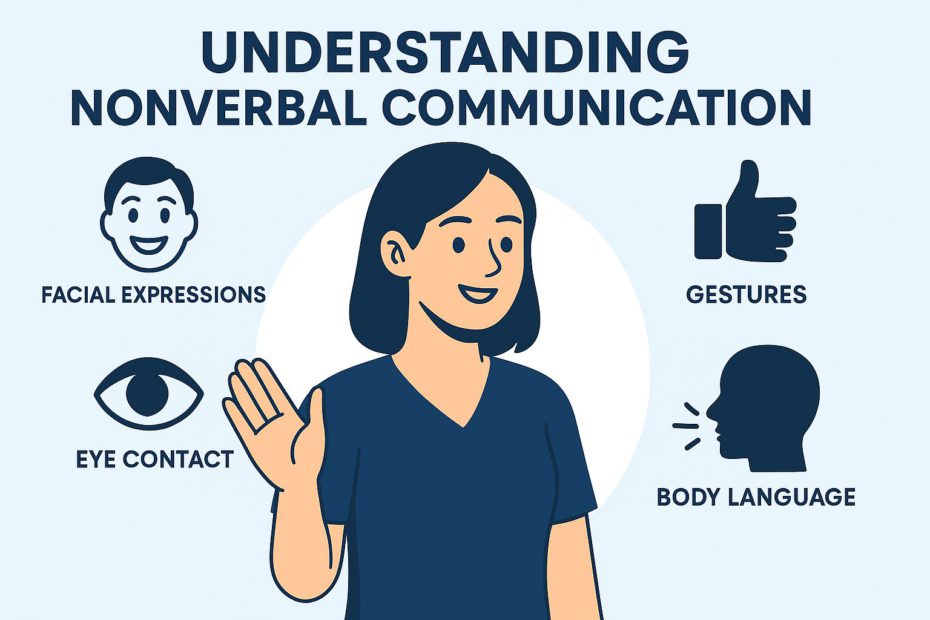When we think of communication, spoken or written words often come to mind first. But a large portion of our daily interactions happens without saying a single word. This powerful, silent form of communication is known as nonverbal communication, and it plays a critical role in how we express ourselves and understand others.
What Is Nonverbal Communication?
Nonverbal communication refers to the transmission of messages or signals without the use of words. It involves body language, facial expressions, gestures, eye contact, posture, tone of voice, and even physical space. These nonverbal cues can support, contradict, enhance, or completely replace verbal messages.
In many cases, people are more influenced by nonverbal signals than by the actual words spoken—making it essential to understand and use them effectively.
Types of Nonverbal Communication
Here are the main types of nonverbal communication you’re likely to encounter or use in everyday life:
1. Facial Expressions
The human face is capable of expressing countless emotions. Happiness, sadness, anger, surprise, and fear can all be conveyed instantly through facial expressions, regardless of language or culture.
2. Gestures
Movements of the hands and arms often accompany speech or replace words entirely. A thumbs-up, a wave, or a shrug can deliver clear messages without needing explanation.
3. Posture and Body Language
How we sit, stand, or move can indicate openness, confidence, nervousness, or defensiveness. For example, crossing your arms may signal resistance, while leaning forward can show interest.
4. Eye Contact
Making or avoiding eye contact speaks volumes. It can convey confidence, sincerity, or discomfort. The meaning of eye contact varies across cultures but remains a powerful communicator everywhere.
5. Paralanguage (Tone, Pitch, Volume)
Even when words are used, the way they are delivered can change their meaning. A statement said in a sarcastic tone may mean the opposite of its literal meaning.
6. Touch
Touch can express support, affection, or control. A handshake, hug, or pat on the back are all forms of nonverbal communication that vary in significance depending on context and culture.
7. Proxemics (Personal Space)
The distance you keep from others can indicate levels of comfort, intimacy, or authority. For instance, standing too close might feel intrusive, while too much distance could seem unfriendly.
Why Is Nonverbal Communication Important?
- Reinforces Verbal Messages: Gestures and expressions help emphasize key points in conversation.
- Builds Trust and Connection: Consistent body language and eye contact foster trust.
- Expresses Emotions Instantly: Nonverbal cues often reveal true feelings more quickly and accurately than words.
- Helps Navigate Social Situations: Understanding cues like tone or posture can guide us in professional or casual interactions.
- Essential for Cross-Cultural Understanding: While some nonverbal behaviors vary culturally, recognizing universal signals helps bridge communication gaps.
Improving Your Nonverbal Communication Skills
To become a better communicator, start by observing your own nonverbal habits. Are you maintaining eye contact? Is your body language open and relaxed? Here are a few quick tips:
- Be aware of your facial expressions.
- Match your body language with your words.
- Pay attention to others’ nonverbal cues.
- Respect personal space in different contexts.
- Use gestures naturally, not excessively.
Conclusion
Nonverbal communication is a silent yet incredibly influential part of human interaction. By becoming more aware of your own nonverbal signals and learning to read others’, you can enhance your communication skills, strengthen relationships, and navigate various social and professional environments with greater ease.

